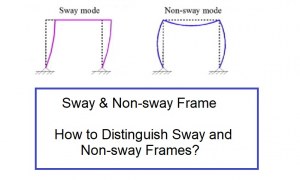🕑 Reading time: 1 minute
Different types of stirrups are designed for columns based on their varying cross-sections, the number of longitudinal reinforcement bars and the load carrying capacity. Stirrups in column construction are commonly known as vertical ties or transverse reinforcement. There are different types of stirrups or ties used in column construction:- Helical Reinforcement
- Lateral Ties
Contents:
1. Helical Reinforcement
The helical reinforcement differs from the lateral ties as the latter one possess spacing between individual ties. In helical reinforcement ,instead of spacing, the measured value is pitch as shown in the figure-1 below.
Fig.1. Helical Reinforcement and Lateral Ties in Column
2. Lateral Ties
The lateral ties are transverse reinforcement which forms an individual ring with a fixed spacing between each the links (figure-1(c)). The lateral stirrups provided can be two-legged stirrups, four-legged stirrups or six-legged stirrups etc depending on the column cross-section and the number of vertical or longitudinal reinforcement bars employed. Here different Lateral tie configuration for different number of vertical reinforcement bars are explained. The configurations are based on the ACI 315-99 recommendations.1. Lateral Tie Configuration for 4- Bars
The figure-1 below shows the tie configuration for 4 numbers of vertical column bars. This is a typical type of configuration employed for simple column design. This configuration can be called as 2 legged stirrups column type.
Fig.2: Lateral Tie Configuration for 4- Bars
2. Lateral Tie Configuration for 6- Bars

Fig.3: Lateral Tie Configuration for 6- Bars
3. Lateral Tie Configuration for 8- Bars

Fig.4: Lateral Tie Configuration for 8 Bars
4. Lateral Tie Configuration for 10- Bars

Fig.4: Lateral Tie Configuration for 8 Bars
5. Lateral Ties for different column cross sections

Fig.5.Lateral Ties for different column cross sections

Fig.6.Lateral Tie Arrangement for 16 bars with cross ties.



